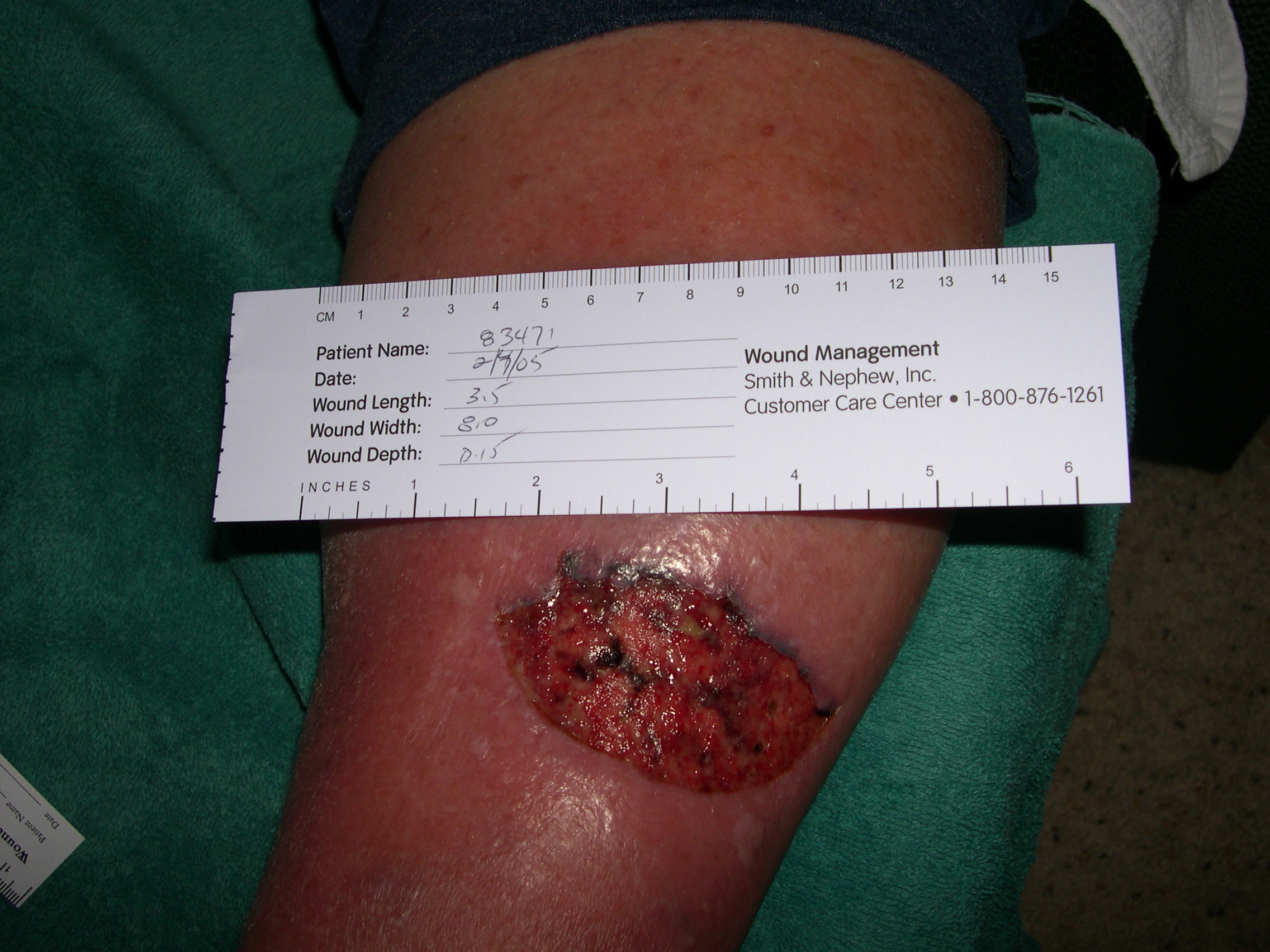

|
WOCN Homepage |
Case study: Patient 69 year-old female who traumatized her anterior shin while visiting with her PCP the week of 1/15/05. The wound was sutured at that time. Patient then visited surgeon on 1/29/05 who opened wound and debrided site. Surgeon scheduled the patient for a plastic surgery consult to consider STSG. On 2/4/05 wound measured 3.5x8.0x0.15. Wound bed was 10% slough with copious thin serous/serous sanguineous exudate. Skin warm periwound with edema and erythema. Patient performed daily dressings changes: papain-urea-chlorophyllin copper complex sodium ointment (PUC) was placed in the wound bed and trypsin, balsam peru, and castor oil (TBC) were placed periwound. Wound was then dressed with gauze. Plan was followed for 11 days to eliminate necrotic tissue.
On 2/15/05, wound measured 3.4x6.9x0.1. Wound was debrided and porcine xenagraft was applied to the wound bed. Wound was then covered with a silver dressing, foam adhesive dressing and light compression wrap. porcine xenagraft was applied again 2/18/05, with UNNA boot cover. Patient received three more applications subsequently and on 3/3/05 wound measured 1.2x4.0x0.05. Patient was sufficiently healed to discontinue porcine xenagraft and continued treatment of wound with a combination of PUC, TBC and silver dressings to healing.
Wound was healed on 3/21/05. Patient reported pain at start of care and some discomfort from UNNA boots during course of treatment, but no pain from the wound during or subsequent to porcine xenagraft applications. Patient completed all care between clinician visits.
Conclusion: µ porcine xenagraft provided sufficient scaffolding to allow the wound to heal without further surgical intervention. µ Interim care was easily accomplished by the patient, eliminating the need for more frequent physician or nursing visits. µ Patient was able to continue with daily activities without interference from wound.

See more of Case Study Poster Abstracts
See more of Case Study Abstracts
See more of The 38th Annual WOCN Society Conference (June 24 -- 28, 2006)